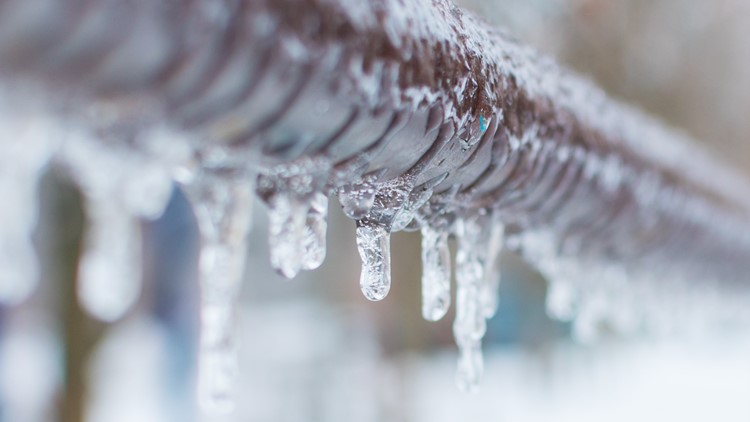Important Advice to Prevent Frozen Pipes in Cold Weather: Professional Insights
Important Advice to Prevent Frozen Pipes in Cold Weather: Professional Insights
Blog Article
We've stumbled on this great article pertaining to Winter Plumbing Precautions: Preventing Frozen Pipes down the page on the web and accepted it made sense to write about it with you on my blog.

Cold weather can ruin your plumbing, specifically by freezing pipes. Right here's how to avoid it from occurring and what to do if it does.
Introduction
As temperature levels decline, the risk of frozen pipelines increases, potentially resulting in expensive repair services and water damage. Comprehending exactly how to prevent frozen pipes is critical for house owners in chilly environments.
Recognizing Frozen Pipelines
What creates pipelines to freeze?
Pipelines ice up when exposed to temperature levels listed below 32 ° F (0 ° C) for expanded durations. As water inside the pipelines ices up, it broadens, putting pressure on the pipeline wall surfaces and possibly triggering them to break.
Threats and problems
Icy pipes can bring about supply of water disruptions, building damage, and expensive repair services. Burst pipelines can flood homes and create comprehensive architectural damage.
Indications of Frozen Piping
Identifying frozen pipes early can avoid them from rupturing.
How to recognize frozen pipes
Seek decreased water flow from faucets, unusual odors or noises from pipes, and visible frost on revealed pipes.
Prevention Tips
Insulating prone pipes
Wrap pipelines in insulation sleeves or make use of warm tape to shield them from freezing temperature levels. Focus on pipes in unheated or outside areas of the home.
Home heating techniques
Maintain indoor spaces properly warmed, especially locations with plumbing. Open closet doors to permit warm air to distribute around pipes under sinks.
Shielding Outdoor Plumbing
Garden pipes and exterior taps
Separate and drain pipes garden hose pipes before wintertime. Mount frost-proof faucets or cover exterior taps with insulated caps.
What to Do If Your Pipes Freeze
Immediate activities to take
If you believe frozen pipelines, maintain taps open to ease pressure as the ice melts. Make use of a hairdryer or towels soaked in warm water to thaw pipelines slowly.
Long-Term Solutions
Structural adjustments
Think about rerouting pipelines far from outside wall surfaces or unheated areas. Include extra insulation to attics, basements, and crawl spaces.
Updating insulation
Invest in top notch insulation for pipelines, attic rooms, and walls. Correct insulation helps preserve consistent temperature levels and reduces the threat of icy pipes.
Conclusion
Avoiding icy pipes requires proactive measures and fast reactions. By recognizing the causes, indicators, and preventive measures, homeowners can shield their pipes throughout cold weather.
5 Ways to Prevent Frozen Pipes
Drain Outdoor Faucets and Disconnect Hoses
First, close the shut-off valve that controls the flow of water in the pipe to your outdoor faucet. Then, head outside to disconnect and drain your hose and open the outdoor faucet to allow the water to completely drain out of the line. Turn off the faucet when done. Finally, head back to the shut-off valve and drain the remaining water inside the pipe into a bucket or container. Additionally, if you have a home irrigation system, you should consider hiring an expert to clear the system of water each year.
Insulate Pipes
One of the best and most cost-effective methods for preventing frozen water pipes is to wrap your pipes with insulation. This is especially important for areas in your home that aren’t exposed to heat, such as an attic. We suggest using foam sleeves, which can typically be found at your local hardware store.
Keep Heat Running at 65
Your pipes are located inside your walls, and the temperature there is much colder than the rest of the house. To prevent your pipes from freezing, The Insurance Information Institute suggests that you keep your home heated to at least 65 degrees, even when traveling. You may want to invest in smart devices that can keep an eye on the temperature in your home while you’re away.
Leave Water Dripping
Moving water — even a small trickle — can prevent ice from forming inside your pipes. When freezing temps are imminent, start a drip of water from all faucets that serve exposed pipes. Leaving a few faucets running will also help relieve pressure inside the pipes and help prevent a rupture if the water inside freezes.
Open Cupboard Doors
Warm your kitchen and bathroom pipes by opening cupboards and vanities. You should also leave your interior doors ajar to help warm air circulate evenly throughout your home.

I have been very serious about Prevent Frozen Pipes and I really hope you enjoyed reading my page. Kindly pause to distribute this post if you enjoyed reading it. Thanks a lot for being here. Revisit us soon.
Click Here Report this page